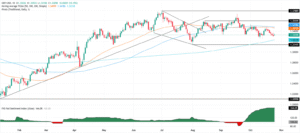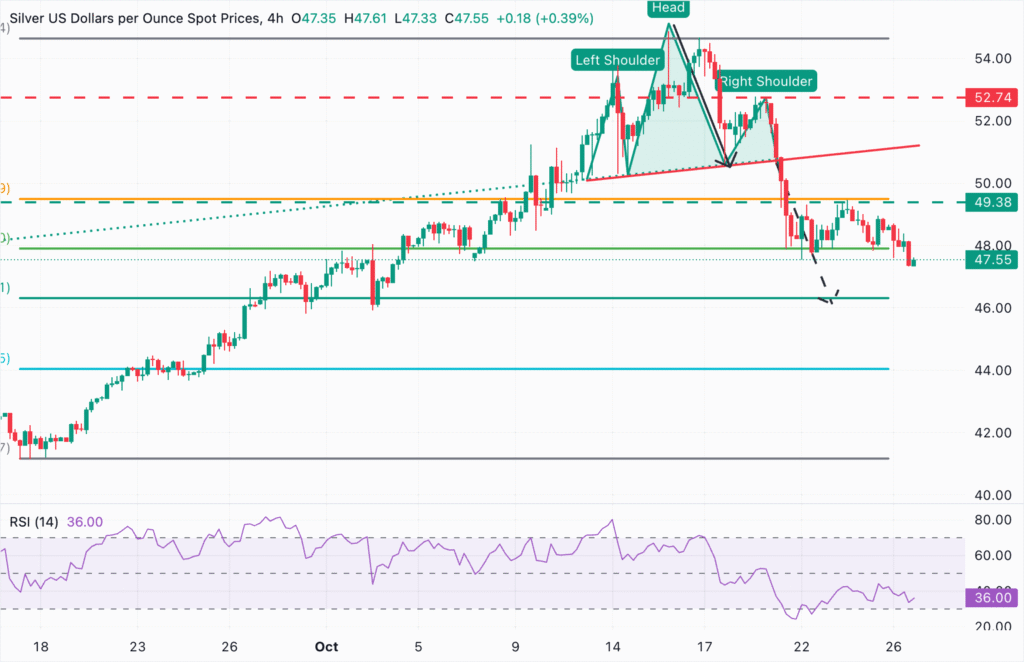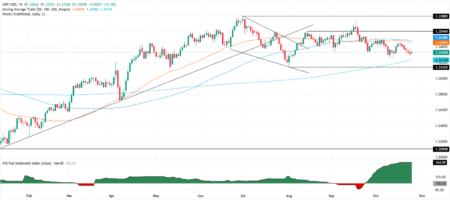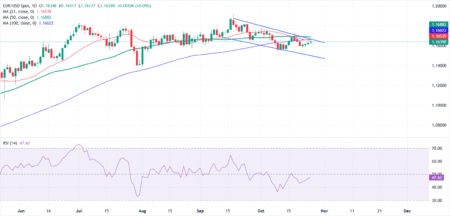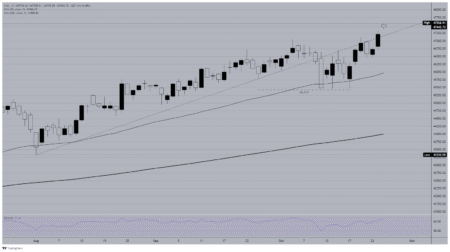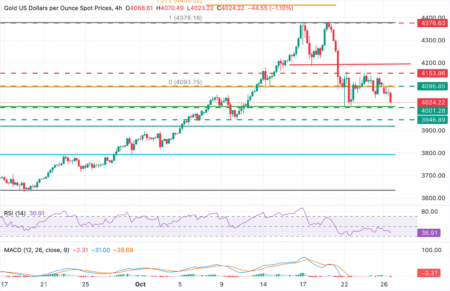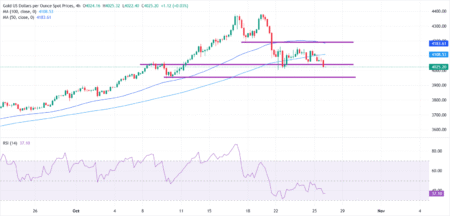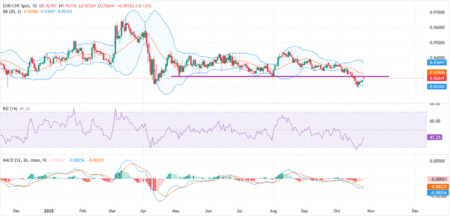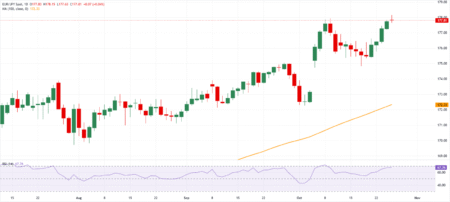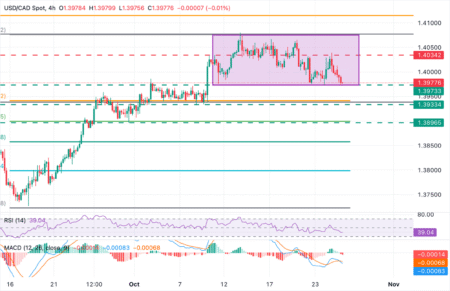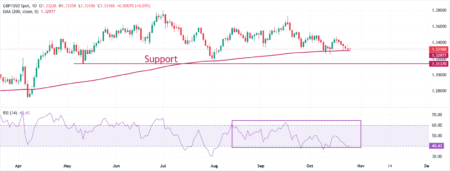Silver (XAG/USD) extends losses on Monday amid a positive market sentiment, following upbeat reports regarding a potential China-US trade deal. The white metal’s reversal from mid-October highs above $54.00 is approaching the $47.00 level.
Precious metals are on their back foot. Comments by US President Donald PrumpTrumpp showing confidence that he will reach a good deal with his Chinese counterpart Xi have reinforced investors’ optimism earlier this morning, adding negative pressure on traditional safe-havens like Silver.
Technical analysis: A bearish H&S pattern remains in play
The technical picture shows price action below the neckline of a bearish Head & Shoulders, at the $50.71 area, with the pattern’s measured target, at the 61.8% Fibonacci retracement of the September-October rally, at the $46.35 area.
The mentioned Fibonacci level and the area around $46.00, where the pair was contained on September 30 and October 2, are likely to pose significant support. Below here, the next target is the 76.2% Fibonacci retracement of the same cycle, near $44.00.
To the upside, the October 22 and 23 highs, at the $49.40 area and the H&S neckline, right above $51, are likely to act as resistance now, ahead of the October 20 high at the $52.75 area.
Silver FAQs
Silver is a precious metal highly traded among investors. It has been historically used as a store of value and a medium of exchange. Although less popular than Gold, traders may turn to Silver to diversify their investment portfolio, for its intrinsic value or as a potential hedge during high-inflation periods. Investors can buy physical Silver, in coins or in bars, or trade it through vehicles such as Exchange Traded Funds, which track its price on international markets.
Silver prices can move due to a wide range of factors. Geopolitical instability or fears of a deep recession can make Silver price escalate due to its safe-haven status, although to a lesser extent than Gold’s. As a yieldless asset, Silver tends to rise with lower interest rates. Its moves also depend on how the US Dollar (USD) behaves as the asset is priced in dollars (XAG/USD). A strong Dollar tends to keep the price of Silver at bay, whereas a weaker Dollar is likely to propel prices up. Other factors such as investment demand, mining supply – Silver is much more abundant than Gold – and recycling rates can also affect prices.
Silver is widely used in industry, particularly in sectors such as electronics or solar energy, as it has one of the highest electric conductivity of all metals – more than Copper and Gold. A surge in demand can increase prices, while a decline tends to lower them. Dynamics in the US, Chinese and Indian economies can also contribute to price swings: for the US and particularly China, their big industrial sectors use Silver in various processes; in India, consumers’ demand for the precious metal for jewellery also plays a key role in setting prices.
Silver prices tend to follow Gold’s moves. When Gold prices rise, Silver typically follows suit, as their status as safe-haven assets is similar. The Gold/Silver ratio, which shows the number of ounces of Silver needed to equal the value of one ounce of Gold, may help to determine the relative valuation between both metals. Some investors may consider a high ratio as an indicator that Silver is undervalued, or Gold is overvalued. On the contrary, a low ratio might suggest that Gold is undervalued relative to Silver.
Read the full article here



